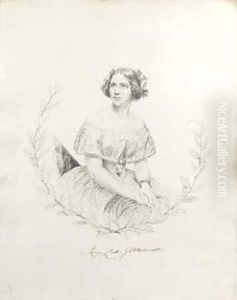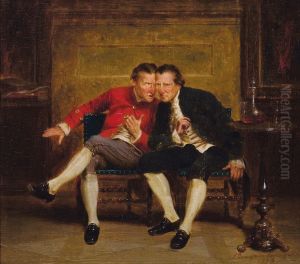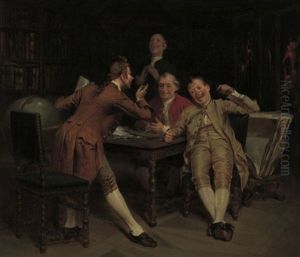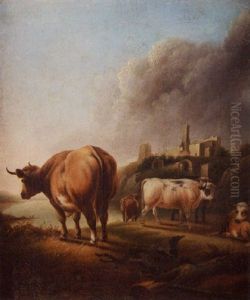John Beaufain Irving Paintings
John Beaufain Irving was an American artist born in 1826, recognized for his contributions to the visual arts in the 19th century, particularly in the realm of landscape painting. Irving's life and career were shaped by the historical context of his time, including the Civil War era, which influenced the themes and subjects of his work. His artistic journey reflects a dedication to capturing the beauty and complexity of the American landscape, making him a noteworthy figure in the history of American art.
Irving's early life was marked by an exposure to the arts and culture, thanks to his family's status and connections. This environment nurtured his passion for painting and drawing from a young age. He pursued formal art education through various institutions and under the mentorship of established artists of his time. These experiences allowed him to refine his technique and develop a distinctive style that emphasized the interplay of light, shadow, and natural elements.
Throughout his career, Irving traveled extensively across the United States, drawing inspiration from its diverse landscapes. His works often depicted serene scenes of the American countryside, rivers, and coasts, capturing the essence of each location with a keen eye for detail and a profound appreciation for nature's beauty. Irving's paintings were celebrated for their realism, depth, and emotional resonance, earning him a place among the prominent landscape painters of his era.
Despite his success as an artist, John Beaufain Irving's life was not without challenges. The Civil War period, in particular, had a profound impact on him, both personally and professionally. The conflict and its aftermath influenced the themes of his work, leading him to explore more somber and reflective subjects. This shift in focus reflected the broader societal changes and challenges facing the United States during this tumultuous period.
John Beaufain Irving's contribution to the art world extended beyond his paintings. He was actively involved in the artistic community, participating in exhibitions and engaging with contemporary art movements. His work received recognition and accolades during his lifetime, and he was regarded as a significant figure in the landscape painting tradition.
Irving's legacy continued after his death in 1877. His paintings are held in high esteem and can be found in various art collections and museums. They serve as a testament to his skill, vision, and the enduring appeal of the American landscape as a subject for artistic expression. John Beaufain Irving remains an important figure in the history of American art, celebrated for his ability to capture the spirit and beauty of the natural world.



